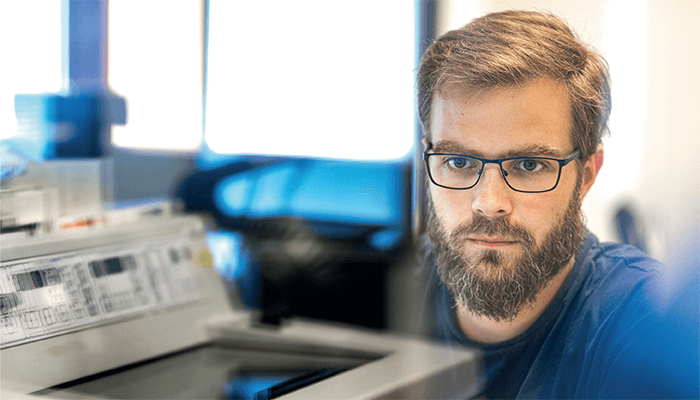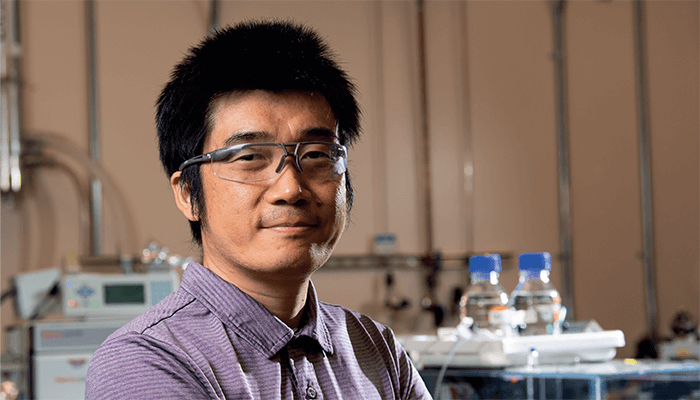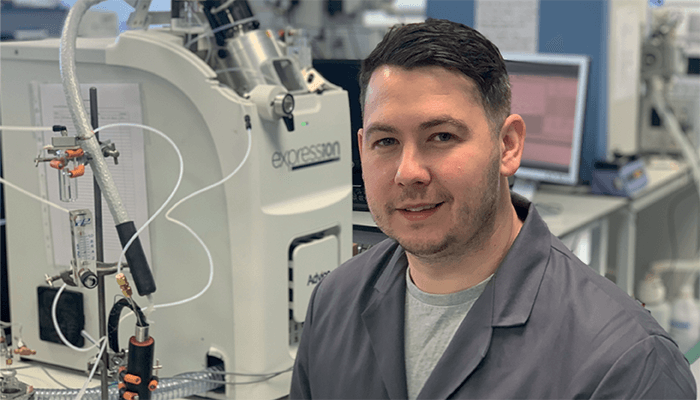
Bram Heijs: In the last decade, mass spectrometry (MS) has become far more widely available. Manufacturers and vendors are making it increasingly simple to operate and maintain analytical equipment – to the point where someone with no MS background can run experiments and process the data. These trends are replicated in the mass spectrometry imaging (MSI) field. The relative simplicity of the equipment makes it an attractive method to experts from other scientific disciplines, who often lack the required expertise needed to fully interpret the multifaceted data.
I truly believe that, to make analytical sciences more accessible to the larger scientific community, we must inject more effort into education. A more altruistic outlook is needed in the current competitive academic and scientific environment to enable peers to actively work together, sharing knowledge and expertise.
With the rate at which MSI is currently developing, there is also no doubt that incredible new advances will be unveiled in the near future. About 10 years ago, routine measurements were performed at 100 µm spatial resolution. Now, state-of-the-art technology performs measurements at subcellular spatial resolution to enable the analysis of individual cells. It is a no-brainer that the future has single-organelle imaging in store – in fact, modern mass spectrometers can already analyze the molecular content of isolated single organelles! In addition to the ongoing push for spatial resolution, spatial molecular identification and annotation tools will likely become more commonplace, which should see the end of “putative identifications” commonly seen in MSI-based work.

Shane Ellis: Agreed; MSI has progressed rapidly in the last decade. Though often used in isolation, MSI can also be used in combination with other imaging modalities, such as optical and fluorescence microscopy, spatial transcriptomics, and even in vivo techniques such as MRI. The struggle we now face is merging different imaging modalities and interpreting the data to acquire the most information out of both.
Our work focuses heavily on lipid imaging. We can already generate rich MSI datasets that show the distribution of hundreds of lipid species throughout tissues, but we know that a large fraction of the lipidome is not detected. Conventional MSI methods also cannot resolve the precise molecular structures of lipids – although we and others are addressing this through the development of various isomer-resolved MSI techniques. These challenges limit our ability to properly understand the biological origins and precise metabolic pathways that give rise to the altered lipid distributions observed with MS. New technologies and data analysis are needed to fully extract the vast amount of metabolic data contained in MSI datasets.
In the future, I believe MSI will be increasingly integrated with other imaging modalities – including multiplexed immunohistochemistry using MSI – and its capabilities for single cell analysis and subcellular resolution using soft desorption/ionization techniques will rapidly develop. I also believe that MSI-based tissue classification will become prevalent in clinical diagnostics and complement conventional histopathology.

Ying Zhu: On a related note, I envision that single-cell MS will undergo rapid progress and transform biomedical research and drug discovery. The essential requirement of single-cell analysis is to analyze a large number of cells, so the analytical procedures must be robust and high-throughput. We will see fascinating developments in microfluidic sample preparation, high throughput liquid chromatography, and highly sensitive MS.

Laura Sanchez: I think we need better standardization protocols for imaging mass spectrometry and reporting data acquisition and processing – because it is often difficult to even consider reanalyzing someone else’s data. Additionally, the unavailability of data and standard spectra is often a major bottleneck. I believe that data availability and reporting standards should be a priority so that we can best leverage the advances taking place in data science and our MS datasets can be mined to the fullest extent!

Boniek Gontijo: I work with high-resolution Fourier-transform ion cyclotron resonance mass spectrometry (FT-ICR MS) and the biggest challenge we face is the shortage of helium, which is essential for magnetic resonance. New developments to produce cryogen-free superconducting magnetic systems feasible for MS are urgent for FT-ICR MS to continue delivering ultra-high mass accuracy and vital resolving power in the analysis of complex mixtures.

Daniel DeBord: I believe that the lack of analytical scientists with experience and training in advanced MS techniques is hindering the growth of academic and industrial organizations. It is very difficult to find candidates with the necessary skills to succeed at developing and using analytical instrumentation. The educational pipeline produces a fixed number of graduates each year – but the demand for these individuals continues to grow year after year across the field. Many positions remain unfilled, with human capital the “limiting reactant” for the speed at which research and development proceed.
Looking at the positives, the field of MS analysis has progressed from a scientific curiosity to the benchmark for addressing challenging chemical analyses. This advancement represents a maturation of instrumentation and, as a field, we have engineered our way closer to the asymptotic limits of performance for various analyzers and techniques. Visionaries often look to combine multiple orthogonal techniques to yield a multiplicative benefit greater than any taken independently. I predict that technology hybridization will continue. Merging various analytical approaches of traditional mass spectral analysis creates new and interesting capabilities that will propel the field forward.

Liam Heaney: I would not necessarily call it a prediction, but there are a few areas related to mass spectrometry that I would like to see progress. The major aspect of this is the capacity to use applied mass spectrometry in the field. Though there have been some developments in this area over the past decade, the push to enhance equipment “deployability” will be invaluable to the applied sector. This would allow users to take instruments to the sample for high-throughput screening. To achieve these goals, we must first work toward reducing the complexity of analytical methods by improving the efficiency of preanalytical steps. This will allow us to effectively use less bulky, more cost-effective equipment to overcome current sensitivity limitations.





